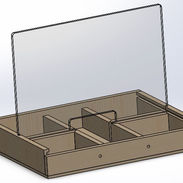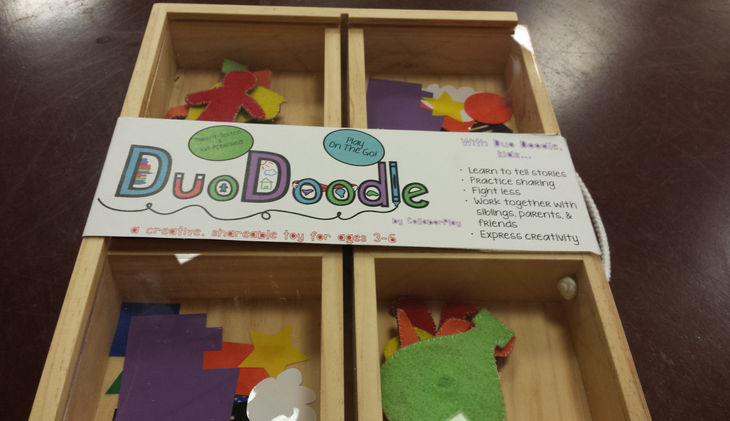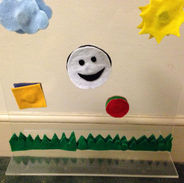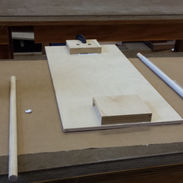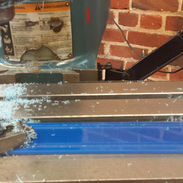
DUO DOODLE
Collaborative artboard toy
INTRODUCTION
For my capstone project at Stanford, I worked with a student from Stanford's Graduate School of Education to design and manufacture a toy called Duo Doodle.
We conducted user research, prototyped, and iterated on our design to create an art board toy that encourages collaboration between preschool-aged children and teaches conflict resolution. We manufactured Duo Doodle overseas and had a lot of fun testing with children. See our pitch video below, which we used to find a coach to help us develop this product (originally called CollaborPlay).
TIMELINE
6 months (2015)
MAKE OF THE TEAM
User Researcher & Product Designer (partner project)
KEY GOAL
Design a product that encourages collaboration and creativity between young children.
USER RESEARCH
One in 88 children in the US has autism spectrum disorder, and many of these children have neurotypical siblings. Studies have shown that sibling interaction has many benefits for developing children, but autistic children need to learn how to interact with their neurotypical siblings in order to improve their social interactions in and out of the home environment.
We began our project with the intent of designing a product to help children with autism, but we were unable to find enough children with ASD who were willing to participate in our research and testing. We decided to keep children with autism as a user group, but also opened our research up to all sibling pairs under age 10.
We interviewed about half a dozen parents of multiple children and talked to their kids as well. This pool of families was instrumental in not only our user research, but our testing and iterating as well. From our initial interviews, we gleaned the following insight:
Interactive play has lots of proven benefits for both siblings, ASD or not, but it’s hard to get young children motivated to play with their ASD sibling if the ASD child doesn’t give his sibling attention. The most benefit comes from when the ASD child plays with neurotypical children, and such interactions begin within the home (with siblings).
USER PERSONAS

IDEATION
During our first brainstorming session, we decided to design a type of block that would be large, foamy, and safe for children with ASD. After visiting and interviewing more families, we found that most families already had blocks of some sort, and didn’t necessarily need more. We brainstormed some more and landed on a transparent, collaborative art board toy.

We user tested with several families in the community. It was fun for both us and them!

PROTOTYPING
I was the sole Product Designer for this project, so I was in charge of all the prototyping and creation of the physical product.
I made at least 10 prototypes, ranging from low-fi cardboard to machine-milled acrylic to dovetailed wood. Through each iteration, I learned what designs were most sensible and what didn’t work at all. When designing for kids there are certain considerations I had to keep in mind: there couldn’t be any small pieces that could pose a choking hazard; the product had to be sturdy enough to take a beating from a rambunctious child; the toy had to be easy enough for someone with limited fine motor skills and tiny hands to use. Keeping these things in mind, as well as the insights we learned through interviews, I iterated until we landed on a final prototype.
TESTING & ITERATING
Throughout the prototyping process, of course, we were constantly visiting families to test each version of our toy. Each testing session was extremely valuable and provided us with the feedback we needed to iterate and improve our product.

Prototype 1
Our first prototype had a large wooden platform and a conveyor mechanism that moved a plastic sheet across the artboard to change the scene. We realized the moving pieces were too complicated and the whole prototype was too big.

Prototype 2
Next, we prototyped a simple sheet of transparent acrylic on a small stand. Kids could use wet erase markers to draw on the artboard and stick laser-cut vinyl shapes to the screen. We created felt shapes with magnets inside to encourage collaboration; the magnets would only stick if both children applied them together.

Prototype 3
We decided we needed a way to store all of our accessories and props for play. Parents also indicated to us that it would be nice if the toy was portable and compact for travel and storage. I designed a base with storage for the accessories. In the closed position, the clear art board serves as a lid for the box; in the open position, it fits into a slot in the middle of the box, which serves as its base.

Prototype 4
For our final product, we wanted to use materials that were study but safe. Our acrylic box had chipped during a drop test, and the sharp corners would be dangerous to young children. We also wanted a natural look and feel; many parents mentioned they were attracted to the “old-fashioned” style of toys like Melissa & Doug, so we manufactured our toy with a wooden base and kept it as simple as possible.
DESIGN & MANUFACTURE
Once we were happy with the performance of our final prototype, it was time to produce it for resale. We ultimately decided not to pursue CollaborPlay as a start-up company, but we sent designs overseas to have a few samples manufactured.

FINAL THOUGHTS

Designing for Children
One thing that was hard to predict when designing and prototyping was the final cost of our product. We kept it in the back of our minds while deciding what the toy should look like and include; in fact, we eliminated some components we thought would be too costly. However, when we sent the designs overseas for manufacture, the cost ended up being more than we were comfortable reselling. We would have had to market to high-end toy shops, and that wasn’t necessarily our goal.
Cost of Manufacture
My partner and I both had academic and personal experience with children, but no Early Childhood Psychology class could have prepared me for the challenges of designing a real product for real kids. The first thing that became obvious was that children are really rough on their toys! After watching them play with their own toys and breaking ours, I knew that our product would have to be extremely hardy. Safety was another big concern. We tested with several children under one year old, so we had to make sure no part of our product was small enough to be a choking hazard. We also eliminated any sharp corners that could take out an eye. The more we tested with real children, the more we learned about how our product would best fit into their life of play. The children were definitely the stars of this entire project.
Next Steps
Since the cost to manufacture the toy was a bit inhibiting, our next step would be to iterate on the design with more of a focus on cost, without sacrificing quality. Material choice would be a good place to start; we briefly explored injection molding of soft plastic, but the geometry of our product as it currently stands wouldn’t work for that. Another option is to simply eliminate some of the accessories that come with the toy. If we could cut down on the costs enough, we could manufacture Duo Doodle in bulk for all the parents who wish their kids would play together nicely!

